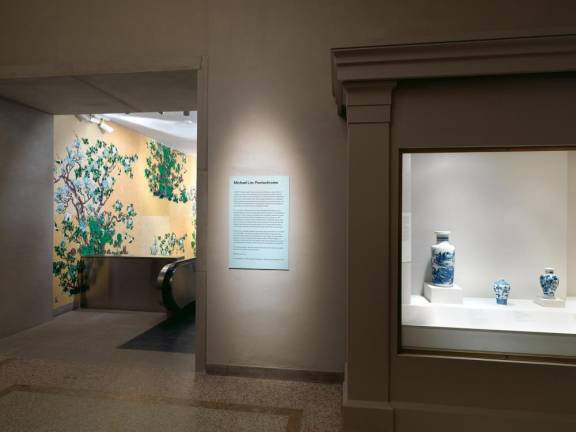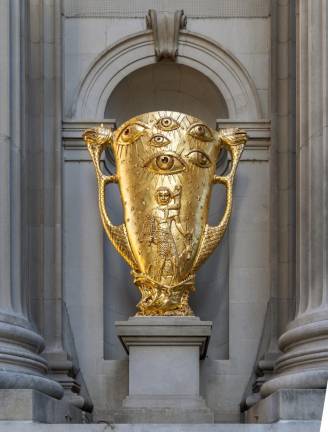New Art in Old Places at The Met
A series of commissioned sculptures in the museum’s main entrance and a colorful installation in the Great Hall escalator together offer another reason to visit the museum
What’s an institution to do when it only has two million square feet and countless ideas? The Metropolitan Museum of Art may be the largest of its kind in the United States, and the fourth largest museum on earth, but any curator will tell you they can never have enough space. “We are always looking for new and surprising ways for The Met’s visitors to experience art,” said Max Hollein, Marina Kellen French Director of the Museum.
Recent creative solutions have included a new series of commissioned sculptures for the stone niches that flank the museum’s main entrance, and now, a colorful installation in the Great Hall escalator. Together, they present a whole new reason to visit The Met.
“Pentachrome,” by Japanese artist, Michael Lin, fills a quiet space with elegant forms in riotous color. The museum commissioned Lin, who’s filled public art spaces around the world with fun, bright reinterpretations of existing artworks, to respond to its collection of Chinese ceramics. If you take the escalator up to the balcony to see the cases filled with delicate, classical vessels, vases, and bowls, you’ll be seeing the familiar in unfamiliar ways.
As the escalator carries the viewer into and through the art, small is transformed to huge, and three dimensions turn into two via yards and yards of images all based on two Qing-dynasty porcelain vases.
“He has created an indelible visual experience while simultaneously drawing attention to the role that Asian art has played within the grand spaces of The Met,” stated Joseph Scheier-Dolberg, associate curator of Chinese paintings. Take the time to match the visions on the escalator walls to the originals and you’ll find countless new reasons to linger on the Met’s grand balcony.
Monumental Sculptures
Guyanese-British artist Hew Locke has created four monumental sculptures to fill the niches that had to wait more than 150 years to receive artworks. Locke’s is the third annual façade sculpture commission, following exhibits by Wangechi Mutu and Carol Bove.
Locke looked to the Met’s collection with an eye to history, culture, trade, migration, colonialism, race, equity and more, and created four massive trophies – two intact, two seemingly broken. The sculptures are covered with eyes. “Look,” they seem to implore.
“Gilt” is their title, a word, it has been noted, that rhymes with guilt. Certainly Locke knows this. But it also conjures a sense of pasted-on glamour, covering up the base with a veneer of shine, a false finery.
So, what do the works communicate? That will depend on who’s looking. But they do raise questions like – Why look? Why not? What should we look for? What are we looking at when we look at art of the past? Are these the treasures? Or should we focus more on the societies and people that they portray or whose voices they embody?
Then consider their very deliberate form. They’re trophies, after all, which raises other questions. Who collected them and under what circumstances? What is the role of a museum? Would these objects be being seen had they stayed under desert sands or been overgrown by a tropical forest? To what kinds of events have these works borne witness? To whom do works of art belong?
And, what do we add as 21st century witnesses? Some challenging considerations await those willing to look into and beyond the gilded eyes of Locke’s sculptures.



